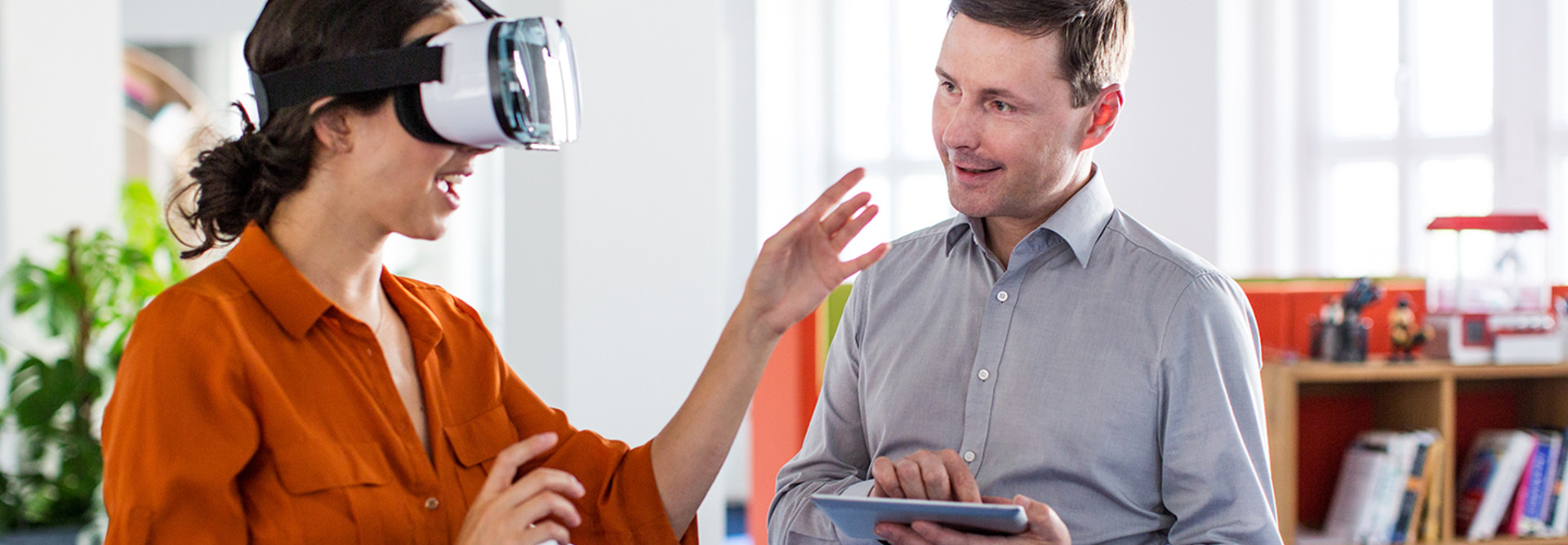VR Gives Student-Teachers a Taste of the Classroom
One of the most common complaints from pre-service teachers is that they haven’t spent enough time in the classroom. For researchers at the University at Buffalo, State University of New York, virtual reality is the solution to this familiar problem.
“We have this interactive, true, authentic classroom environment that allows teachers to practice their teaching” explains Richard Lamb, a researcher on the team leading the training project and an associate professor and director of the Neurocognition Science Laboratory.
Launched this past June with funding from the SUNY Innovative Instruction Technology Grant program, VR-Teach simulates difficult student behaviors in the classroom — giving pre-service (and even in-service) teachers opportunities to learn how to deal with problematic situations.
Using a VR headset and 360-degree videos, created with help from Crosswater Digital Media, teachers enter a virtual classroom and face one of a range of classroom challenges, such as students yelling or playing on their cell phones.
In one scenario, two students are arguing and one stands on a chair as the debate heats up. The teacher can choose from a list of reactions: They can let it go, raise their voice at students or call for help from another teacher.
After they’ve completed the scenario, teachers discuss their choices with Lamb or Elisabeth Etopio, the project’s other researcher who is also interim director of the school’s Teacher Education Institute and interim assistant dean for teacher education.
SIGN UP: Get more news from the EdTech newsletter in your inbox every two weeks!
VR Complements Traditional Training
While Lamb is clear that VR training shouldn’t replace actual classroom experience, he says it’s a great way to build confidence in pre-service teachers by preparing them for realistic classroom situations.
“Sometimes the first time these [student-teachers] get an opportunity to step into a classroom is in their junior year, depending on where they are or what they’re doing. And the number of hours they get may vary by state or by school district or by classroom requirements.”
And, as Lamb explains, VR simulations are much more realistic experiences for teachers than say watching a video. “The research we’ve been doing around virtual reality has found that the way we physiologically respond to the virtual environment is very close to how we respond to the actual activity.”
He says teachers experience tension, tightness in their stomach and increased heart rate in these scenarios, just as they would in a real classroom.
Can VR Training for Teachers Benefit Students?
Lamb says the end goal of the program is to create better educational experiences for students by providing teachers with more experience and training.
“If you have high teacher turnover, teachers who don’t understand what’s going on in the classroom, teachers who don’t have enough experience or enough time in the classroom or teachers who just don’t know what to expect — that ultimately impacts the students,” says Lamb. “Instead of spending their time working on student learning, teachers are working on things like classroom management, how to organize themselves, how to interact, learning how to respond.”
UB Promotes Affordable and Interactive Training
While still a prototype, Lamb and Etopio have worked to make the VR training program an affordable option for teachers and schools.
The program works on a mobile platform, so teachers can run it from their phones and schools don’t have to make any special IT accommodations. Teachers can use any VR headset — even something affordable such as Google Cardboard.
Along with training pre-service teachers at UB, the program is also being used to train in-service K-8 teachers at Enterprise Charter School in Buffalo on classroom and behavior management.
Lamb and Etopio are working to include direct interaction with students in future iterations of the program as well as more diverse scenarios.









